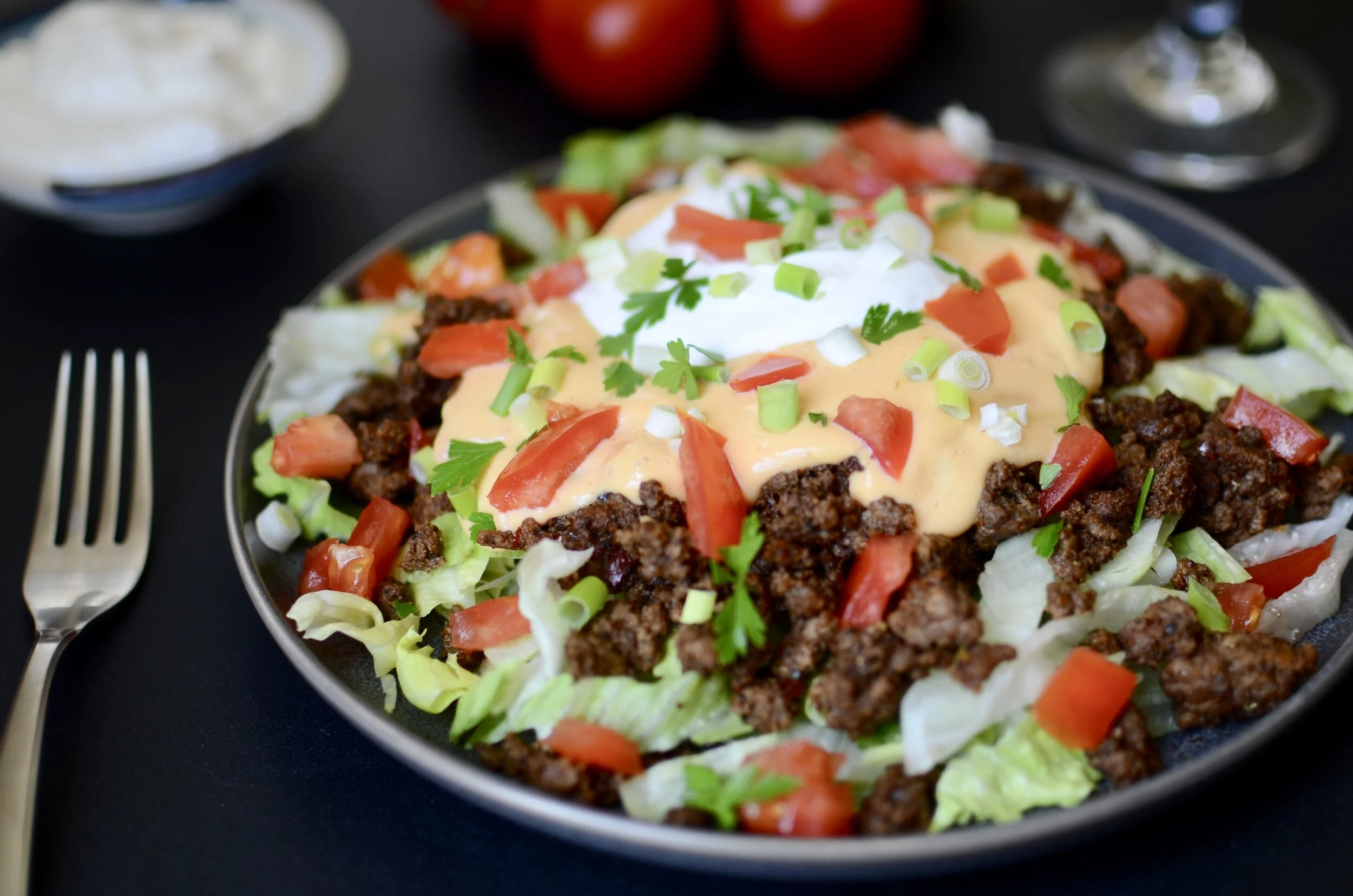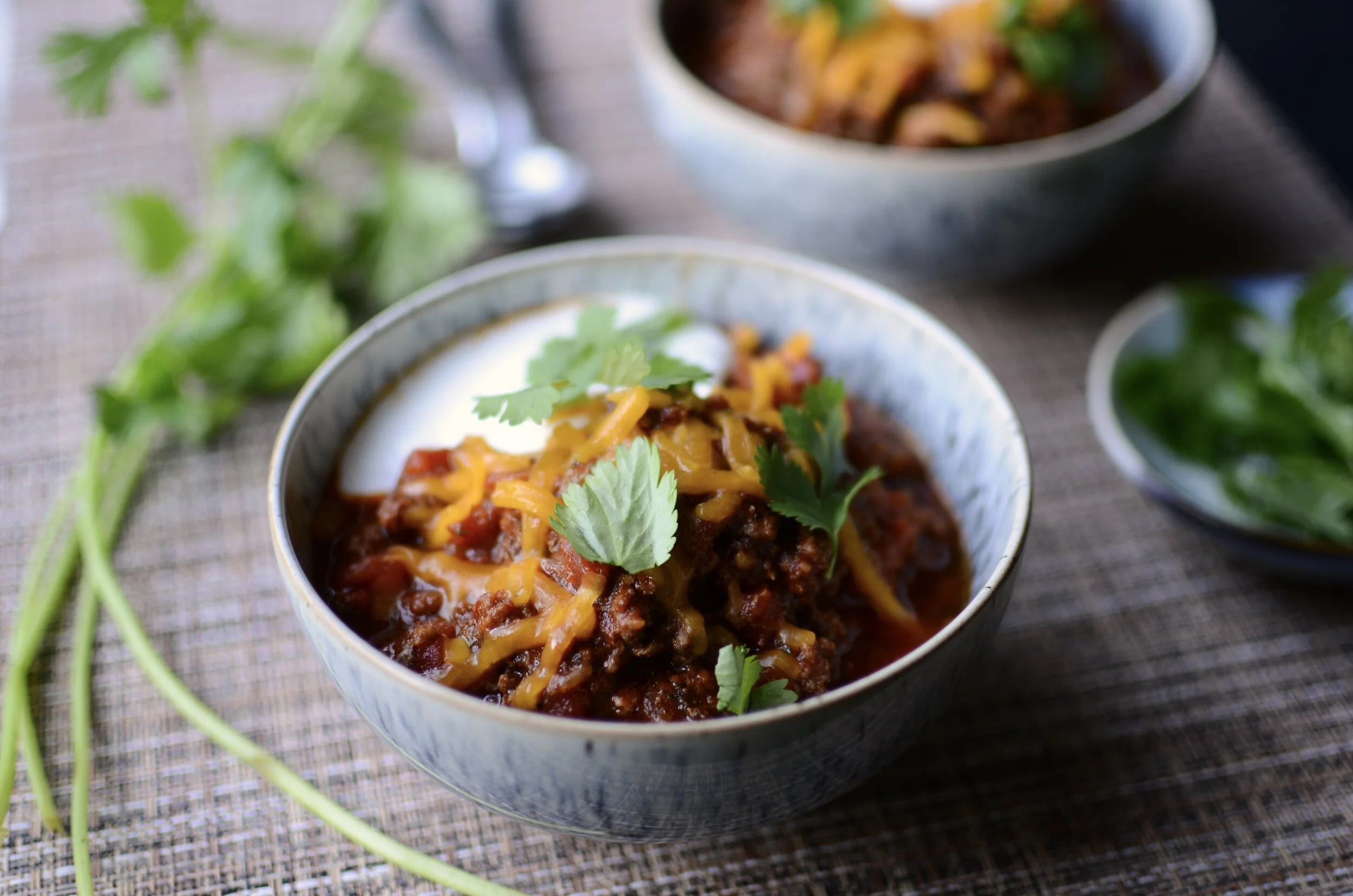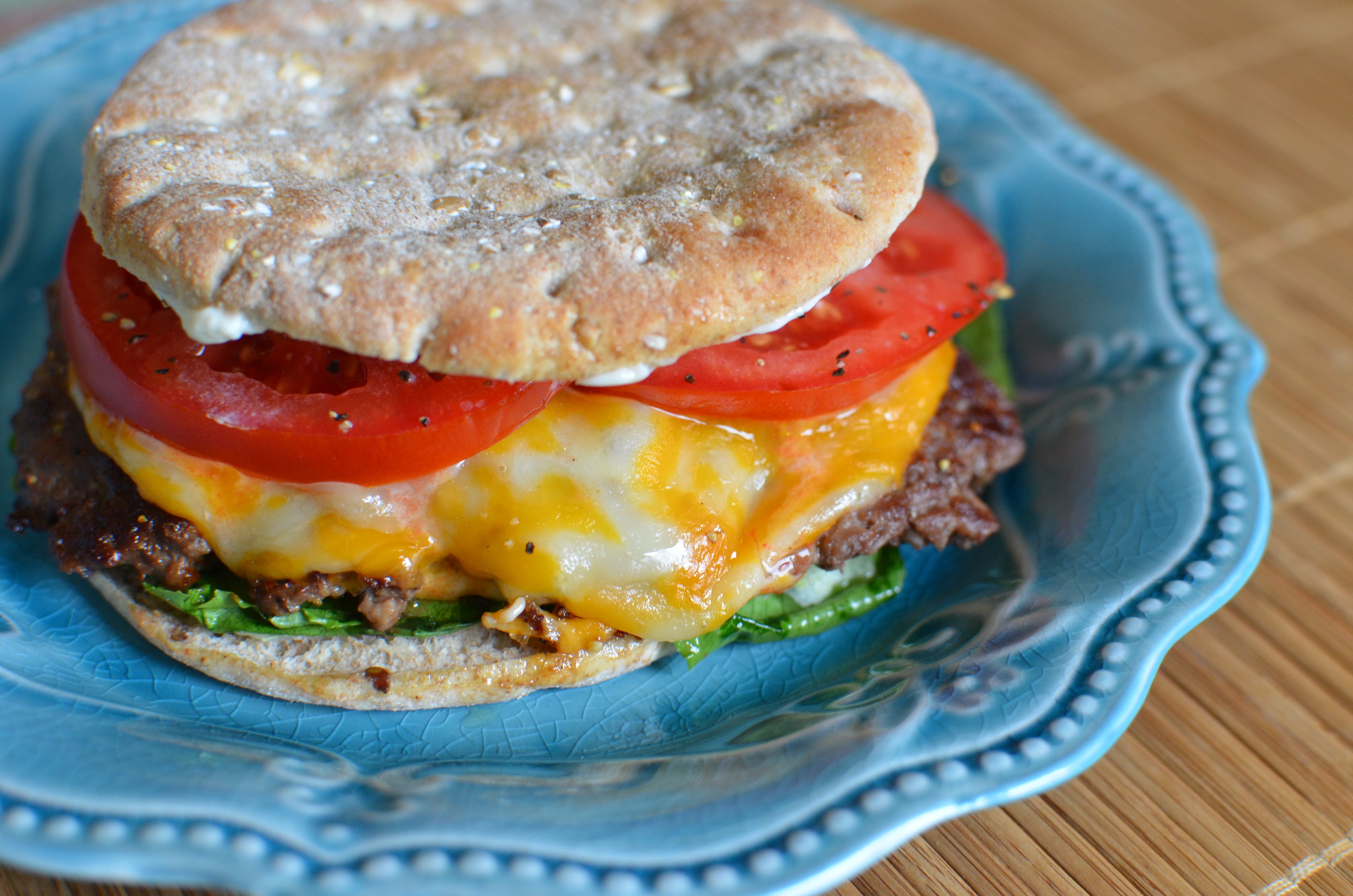Egg Roll in a Bowl
Patricia @ ButterYum
I love, love, love egg rolls, but I don’t love how high in carbs they are. Thankfully I can still enjoy all the flavor without all the guilt, and it comes together in a matter of minutes.
Start by heating toasted sesame oil in a 12-inch or larger skillet.
Slice a bunch of scallions and separate the light green parts from the dark green parts.
Add the light green parts to the skillet and sauté for a minute or two over medium-high heat.
Add minced garlic and ginger…
Saute for another minute or so, stirring constantly. Be sure ti doesn’t burn.
Add ground pork. Ground beef, turkey, or chicken can be substituted, but pork is traditional.
Cook, stirring and crumbling, until no pink remains.
Add a few more ingredients = more sesame oil, rice vinegar, and liquid aminos. Liquid aminos are a gluten-free, low-sodium seasoning similar to soy sauce. You can substitute low-sodium soy if you don’t have liquid aminos.
The addition of the sesame oil, rice vinegar, and liquid aminos (or low-sodium soy) will make a sauce in the skillet.
Next we add cole slaw mix - I like to use the tri-colored one. It just looks so pretty on the plate.
Saute for a few more minutes until the slaw softens a bit. I like it serve it with a crisp-tender texture and still retain its color so I don’t cook it much longer than that. If you like it softer, by all means, cook it longer (and opt for a slaw mix that doesn’t contain red cabbage because it will turn an unappetizing gray color if cooked for more than a few minutes).
just before serving, add the dark green scallion parts. Enjoy!
Items used to make this recipe:
(affiliate links)
12-inch cast iron skillet https://amzn.to/34keJeE
garlic press https://amzn.to/2WAoXoz
microplane grater https://amzn.to/327en9M
locking tongs https://amzn.to/3uLxd8w
Egg Roll in a Bowl
makes 6 servings
Ingredients
2 tablespoons toasted sesame oil
1 bunch scallions, sliced (light and dark parts separated)
1 tablespoon minced or pressed fresh garlic
1 tablespoon minced or grated fresh ginger
1 1/2 pounds ground pork (or beef, turkey, chicken)
3 tablespoons liquid aminos (or low-sodium soy)
1 tablespoon rice vinegar (seasoned or unseasoned)
1 tablespoon sesame oil
1 pound tri-colored slaw mix
1/4 teaspoon ground black pepper
1/8 teaspoon fine salt
Directions
In a 12-inch or larger skillet over medium-high heat, cook light green scallion parts in 2 tablespoons toasted sesame oil for a minute or two.
Add garlic and ginger; stir constantly for another minute, being sure not to allow the garlic to burn.
Add the ground pork; cook by stirring and crumbling until no pink remains.
Add the liquid aminos, rice vinegar, and additional toasted sesame oil.
Add the slaw mix, pepper, and salt; toss frequently for several minutes until slaw mix wilts and softens a bit.
Remove from heat and top with reserved dark green scallion parts.
Note
I like my egg rolls heavily peppered so I will often double, or even triple the pepper called for in the recipe above.















































































